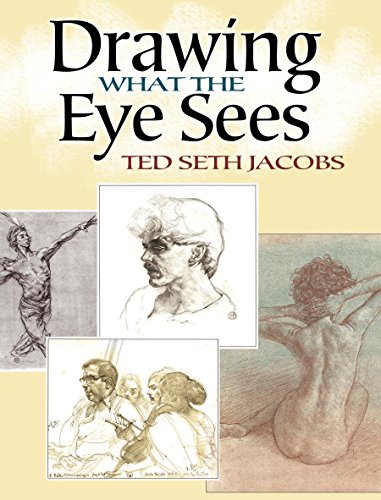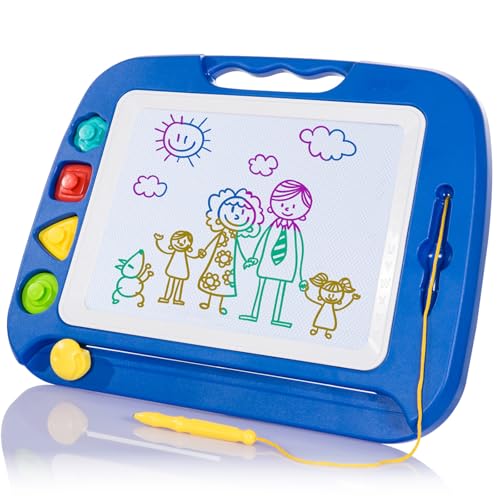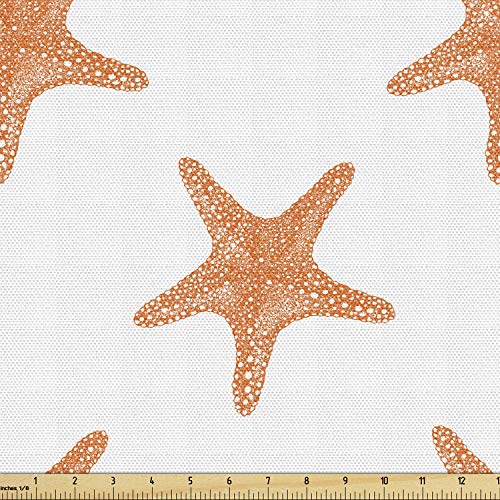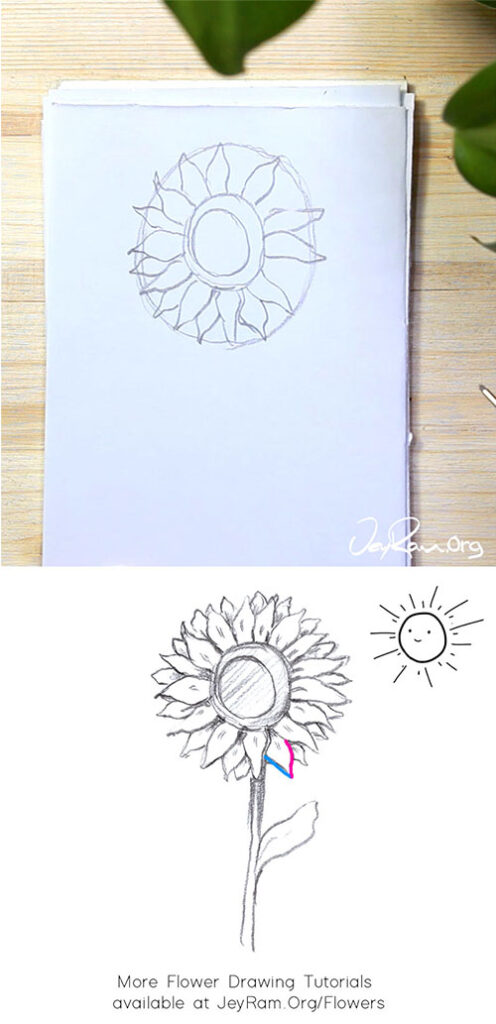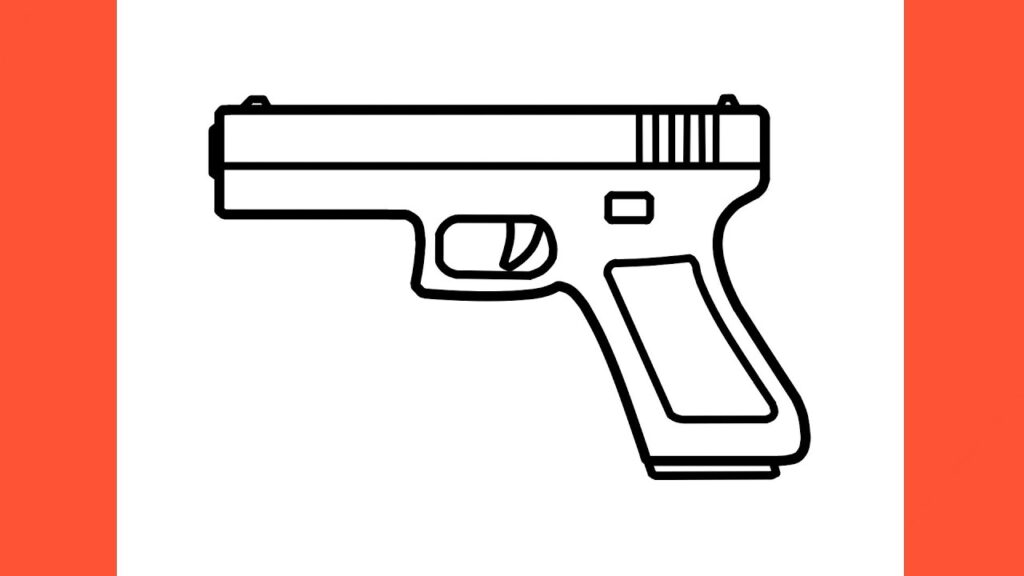Drawing is a fun activity for kids. It’s their first step into creativity.
So, what’s the best first thing to draw for a 3-year-old? Simple shapes like circles or squares are a great start. They are easy and familiar to small hands. Drawing these shapes helps with motor skills. It also boosts their confidence.
But there’s more to it than just shapes. Kids love to express their imagination. They often enjoy drawing their favorite animals or family members. Letting them choose can make drawing more exciting. This builds a sense of achievement. Understanding what kids love to draw helps them enjoy art. It turns a simple activity into a joyful learning experience.
Introduction To Drawing For Toddlers
Watching a toddler grasp a crayon for the first time can be a magical experience. You might wonder what the best first thing for them to draw is. Simple shapes like circles or lines are excellent starting points. These forms lay the foundation for more complex drawings as they grow.
Every child expresses themselves uniquely, and drawing allows them to explore their individuality. Have you ever seen a toddler scribble furiously, only to announce they’ve drawn a dinosaur? It’s moments like these that show the power of creativity.
Drawing isn’t just fun; it’s a crucial part of development. It enhances motor skills and hand-eye coordination. By holding crayons and moving them across paper, toddlers strengthen their fingers.
Beyond physical benefits, drawing boosts cognitive growth. It encourages problem-solving as they decide what to draw and how to represent it. When they draw a house, they learn to break down complex ideas into simple shapes.
Drawing also contributes to emotional well-being. It’s a way for toddlers to express feelings they may not yet have words for. Have you noticed how calm a child becomes when absorbed in art?
Creativity is a skill that can be nurtured from a young age. Offer a variety of drawing tools like crayons, markers, and colored pencils. Each tool offers a different experience and outcome.
Provide them with blank paper instead of coloring books. Blank paper encourages original creations, allowing them to imagine freely. You might be surprised by what they draw when given the freedom to explore.
Ask open-ended questions about their drawings. Instead of asking, “What is this?” try, “Tell me about your picture.” This approach fosters storytelling and deeper thinking.
Have you ever joined your child in drawing? Sharing this activity can inspire them. Your enthusiasm and participation can ignite their passion for art.
Encouraging creativity in toddlers is about exploration and support. It’s about celebrating each scribble as a masterpiece in their developmental journey.
Choosing The Right Tools
Choosing the right tools can make drawing fun for a 3-year-old. Young children need safe and suitable materials. These tools should inspire creativity and learning.
Safe Art Supplies
Safety is crucial for young artists. Use non-toxic crayons and markers. Check labels for safety certifications. Avoid small parts to prevent choking. Supervise your child while they draw.
Age-appropriate Materials
Choose materials suitable for their skill level. Large crayons are easier to grip. Finger paints are fun and safe for little hands. Use thick paper that won’t tear easily. Provide tools that support their growth.
Simple Shapes And Lines
Introduce your 3-year-old to drawing with simple shapes and lines. Start with circles, squares, and lines. These basic forms help develop fine motor skills and creativity.
Drawing is a fantastic way for your 3-year-old to express creativity and build fine motor skills. Starting with simple shapes and lines is crucial. These foundational elements not only make drawing approachable for toddlers but also lay the groundwork for more complex art. Let’s dive into some easy and fun ideas to kickstart their artistic journey.
Starting With Circles
Circles are a child’s best friend when it comes to drawing. They’re easy to draw, and kids love them. You can encourage your child to draw circles by comparing them to familiar objects like the sun, a ball, or even a smiley face. Why not turn circle drawing into a game? Challenge your little artist to draw as many circles as they can in one minute. Not only is it fun, but it also helps develop hand-eye coordination. As they practice, you might notice improvement in their circle sizes and shapes. It’s fascinating to see how such a simple activity can boost their confidence.
Exploring Straight Lines
Straight lines are another excellent starting point. They are the building blocks of many objects and shapes. Encourage your child to draw lines in different directions—horizontal, vertical, and diagonal. This variety helps them understand directionality. Have you ever thought about using a ruler to aid their drawing? It might seem advanced, but kids find it fascinating to use tools. It also helps them create straighter lines. Your child can try drawing roads or even the outline of a house using straight lines. Creating patterns with straight lines is another engaging activity. Ask your child to draw parallel lines and then fill them with colors. This simple task can improve their concentration and creativity. Plus, it’s a great way to introduce them to the concept of patterns. Drawing simple shapes and lines is not just about creating art; it’s about building skills and sparking creativity. What shapes will your child draw today?

Fun With Colors
Exploring the world of colors can be magical for a 3-year-old. Colors ignite creativity and spark imagination. Drawing with colors opens new doors for self-expression. For a young child, this experience is both fun and educational. Starting with simple things to draw helps them enjoy this colorful journey.
Primary Colors
Primary colors are red, blue, and yellow. These colors form the base of all other colors. Introduce them through simple drawings. A red apple, a blue sky, or a yellow sun. These are easy to recognize and draw. Primary colors are bright and cheerful. They capture a child’s attention instantly.
Mixing Colors
Mixing colors is a fascinating activity for kids. It teaches them how new colors are formed. Show them how red and blue make purple. Or how yellow and blue create green. Use simple examples like mixing paint or crayons. This activity enhances their curiosity and understanding of colors. It also improves their fine motor skills. Encourage them to experiment and see what they discover.
Animals And Nature
Introducing young children to drawing can be a delightful experience. Animals and nature offer endless inspiration. These subjects are relatable and simple. They spark curiosity and creativity in children. Engaging three-year-olds with this theme can nurture their love for art.
Drawing Simple Animals
Simple animal drawings are a great start for toddlers. Begin with easy shapes like circles and ovals. Draw a cat using a circle for the head and body. Add triangle ears and a tail. This helps children recognize basic shapes. It also builds their confidence in drawing.
Try drawing a fish next. Use an oval for the body. Add a triangle for the tail. These simple steps make drawing fun and achievable. Children love to see familiar creatures on paper.
Nature-inspired Art
Nature is a wonderful source of inspiration. Start with a simple tree. Draw a straight line for the trunk. Use a circle or cloud shape for the leaves. This introduces children to different lines and forms.
Flowers are another simple choice. Draw a circle for the center. Add petals using rounded shapes. Encourage children to use colors they see in nature. This enhances their observation skills and creativity.
By using animals and nature as drawing subjects, you ignite imagination. This approach keeps children engaged and eager to explore more.

Family And Friends
Introducing young children to drawing helps them express emotions and creativity. Family and friends form the core of a child’s world. Drawing familiar faces can be both fun and comforting for a 3-year-old.
Drawing People
Children love drawing people. Start with simple stick figures. Show them how to draw a circle for the head. Add two lines for arms and legs. Encourage them to draw a smile on the face. This helps them recognize human features.
Use colored pencils or crayons to make it exciting. Bright colors attract children. Let them choose their favorite colors. It keeps them interested in the activity.
Creating Family Portraits
Drawing family portraits can be a joyful experience. Begin with simple outlines of family members. Let the child add details like hair and clothes. Talk about each family member while drawing. It strengthens family bonds.
Display their artwork on the wall. Celebrate their creative efforts. It boosts their confidence and encourages more drawing. A simple frame enhances the presentation.
Family portraits offer a chance to discuss relationships. Teach them how everyone is connected. This drawing activity also helps in identifying feelings. It fosters emotional growth.
Incorporating Stories
Introducing storytelling into drawing activities can transform a simple sketch into an imaginative journey for a 3-year-old. It’s not just about putting pencil to paper; it’s about sparking creativity and curiosity. Stories make drawing more relatable and fun, encouraging young minds to explore beyond their usual boundaries.
Story-based Drawing
Imagine asking your child to draw a picture of a friendly dragon who lives in a colorful forest. You can narrate a short tale about how the dragon enjoys picking flowers or playing with other animals. This approach not only makes drawing exciting but also helps your child connect stories with visuals.
Children love listening to stories, especially if they are interactive. While drawing, you can ask questions like, “What color is the dragon today?” or “What is the dragon’s favorite toy?” This keeps them engaged and encourages them to think creatively.
Using Imagination
Encouraging imagination is key to developing artistic skills. You can guide your child to draw characters or scenes from their favorite storybook. Ask them to imagine new adventures for these characters. This can be a fun way to expand their creativity.
Personal experience can be a great tool here. I remember when my niece drew a picture of her favorite cartoon character flying over a rainbow. It wasn’t just about drawing; it was about the joy in her eyes as she imagined the character’s flight. Such activities can help children express their thoughts and feelings through art.
What story will your child choose to draw next? By asking this, you give them control over their creative journey. This empowers them to think independently and boosts their confidence in expressing their ideas.

Making Art A Routine
Introducing art to a three-year-old is exciting. Begin with simple shapes like circles and squares. These basic forms are easy to draw and help develop fine motor skills.
Introducing art to a 3-year-old can be magical. Drawing helps them express emotions and creativity. Creating a routine around art makes it a daily joy. Kids thrive on routines. Drawing at the same time each day can build anticipation. It becomes a cherished part of their day. Children develop skills and confidence through regular practice. A routine also provides structure. It helps them know what to expect. This predictability is comforting for young minds.
Setting A Drawing Schedule
Establishing a drawing schedule is simple. Pick a time when your child is most alert. Morning or after a nap works well. Consistency is key. Keep the schedule same daily. A fixed time helps children look forward to it. Limit sessions to 15-20 minutes. Short sessions hold their attention better. With time, they might ask for longer drawing periods. Follow their lead. Adjust the schedule as needed.
Creating A Fun Environment
Creating a fun environment boosts creativity. Designate a small corner for drawing activities. Use bright colors and child-friendly tools. Keep paper, crayons, and markers within reach. Play soft music in the background. It can inspire and calm them. Praise their effort, not just the result. Celebrate every line and color choice. This encouragement builds confidence. Avoid distractions like TV or loud noises. Focus should be on the art. Let them explore and make a mess. It’s part of the learning process. Through a routine, drawing becomes more than an activity. It becomes a beloved habit. “`
Encouragement And Praise
Drawing simple shapes can be the best start for a 3-year-old. Circles, squares, and triangles encourage creativity and confidence. Praise their efforts to boost enthusiasm and self-esteem.
Encouragement and praise can work wonders for a 3-year-old picking up a crayon for the first time. These young artists thrive on positive feedback, and your words can shape their confidence and love for drawing. It’s not just about the picture they create; it’s about the joy and pride they feel in the process. ###
Positive Reinforcement
When your child draws, focus on the effort rather than the outcome. “I love how much time you spent on this!” can motivate them more than commenting on the final piece. Ask questions about their drawings to show interest. “What a bright sun! Is it morning or afternoon?” This way, you encourage them to think and talk about their art. Positive reinforcement helps build a child’s self-esteem. They begin to understand that their work is valued, boosting their enthusiasm to continue.
Celebrating Creativity
Celebrate every squiggle and splash of color. “Wow, look at those beautiful colors!” highlights their creativity without focusing on perfection. Create a gallery wall in your home. Displaying their artwork shows them that their creations are important and worthy of admiration. Consider making drawing a shared activity. Sit with them and draw together. This not only encourages them but also strengthens your bond. Encouragement and praise are tools that can transform a child’s drawing experience. How will you inspire your little Picasso today?
Frequently Asked Questions
What Should A 3 Year Old Be Able To Draw?
A 3-year-old can typically draw simple shapes like circles and lines. They might also create basic stick figures or scribbles representing objects or people. Encourage creativity by offering diverse materials and praising their efforts. Their drawings reflect developmental milestones and enhance fine motor skills.
What Can A 3 Year Draw?
A 3-year-old can draw simple shapes like circles and lines. They might also create basic stick figures. Their drawings often represent imaginative interpretations of people and animals. Creativity at this age is abundant, and they enjoy using bright colors.
How To Teach Drawing To A 3 Year Old Step By Step?
Start with simple shapes like circles and squares. Provide crayons and paper. Encourage creativity and exploration. Use positive reinforcement to build confidence. Guide hand movements gently to help develop motor skills. Make drawing a fun, regular activity to nurture interest and imagination.
What Should I Draw First When Learning?
Start with simple shapes like circles, squares, and triangles. Practice sketching these basic forms. Gradually progress to more complex objects and scenes. Consistent practice improves your skills. Focus on understanding proportions, shading, and perspective as you advance. This foundation enhances your drawing ability effectively.
Conclusion
A 3-year-old’s drawing adventure starts with simplicity. Shapes like circles or squares encourage creativity. They boost confidence. Easy drawings make learning fun. Kids explore their imagination. Drawing helps them express ideas. This activity improves motor skills. It nurtures their artistic spirit.
Parents enjoy watching the progress. Every line tells a story. Art time becomes special bonding moments. Remember, the journey matters more than perfection. Encourage practice. Celebrate every masterpiece. Your child’s creativity blossoms with each pencil stroke. Keep the experience joyful.
Watch them grow into little artists.



